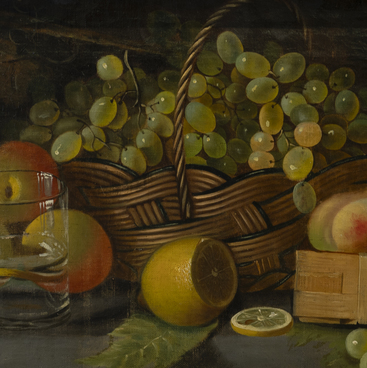German artists of the 17th-18th centuries being under the influence of the Dutchmen created paintings in which animalistic scenes closely neighboured with landscape and genre paintings. Gradually a unique school of landscape painting was forming, and Georg Henry Krola was a typical representative of it. Krola is a German landscape painter born in Dresden in 1804. In 1825, he became a student of Johan Dahl, and two years after started taking classes from David Friedrich Caspar, an outstanding representative of German romanticism.
Both teachers affected Krola’s views, and his work constituted the general run of the creative methods of Dahl and Friedrich. Between 1830 and 1840, Georg Krola lived in Munich, where he became a prominent representative of landscape painters. He also had ties with the painting school of Dusseldorf. He spent a lot of time studying the specifics of local landscapes, in particular, the species of wood. This allowed him to convey the German landscape accurately, and this is one Krola’s artistic achievements.
The artist successfully married a banker’s daughter; she was supportive of the artistic views of her husband. They acquired a castle in the picturesque place and equipped an artistic workshop there. In his landscapes, Krola depicted the fabulous natural scenes of Harz with dark fir forests, rocks, little villages and the turn of the softwood and hardwood forests.
Georg Henry Krola created the painting Landscape with Deer Stalking Scene in the manner of romanticism. The painting features a panoramic landscape with a great oak. The multi-coloured costumes enhance the brownish-green palette. The same happens to the subject of the painting, when after long attentive scrutinizing of the painting the viewer detects the baited deer running away from a kennel and the swiftly galloping array of horse riders. In the natural environment, a human being is not a significant part of the elements.
Until the 18th century, the traditional depiction of hunting or chasing meant muscular bodies of men and scary animals interweaved in an unparalleled fever pitch bristled with spears, swords, tusks and claws. In the 19th century the hunting theme transformed into the fun and pleasure of gallant aristocrats against beautiful landscapes being a delight for the eye.
Both teachers affected Krola’s views, and his work constituted the general run of the creative methods of Dahl and Friedrich. Between 1830 and 1840, Georg Krola lived in Munich, where he became a prominent representative of landscape painters. He also had ties with the painting school of Dusseldorf. He spent a lot of time studying the specifics of local landscapes, in particular, the species of wood. This allowed him to convey the German landscape accurately, and this is one Krola’s artistic achievements.
The artist successfully married a banker’s daughter; she was supportive of the artistic views of her husband. They acquired a castle in the picturesque place and equipped an artistic workshop there. In his landscapes, Krola depicted the fabulous natural scenes of Harz with dark fir forests, rocks, little villages and the turn of the softwood and hardwood forests.
Georg Henry Krola created the painting Landscape with Deer Stalking Scene in the manner of romanticism. The painting features a panoramic landscape with a great oak. The multi-coloured costumes enhance the brownish-green palette. The same happens to the subject of the painting, when after long attentive scrutinizing of the painting the viewer detects the baited deer running away from a kennel and the swiftly galloping array of horse riders. In the natural environment, a human being is not a significant part of the elements.
Until the 18th century, the traditional depiction of hunting or chasing meant muscular bodies of men and scary animals interweaved in an unparalleled fever pitch bristled with spears, swords, tusks and claws. In the 19th century the hunting theme transformed into the fun and pleasure of gallant aristocrats against beautiful landscapes being a delight for the eye.



